Daniel Strain
 As its name suggests, the newly launched Space Weather Operational Readiness Development (SWORD) center at CU Boulder seeks to offer a little protection for the planet, spurring research into the tumultuous environment several hundred miles above the surface of Earth.
As its name suggests, the newly launched Space Weather Operational Readiness Development (SWORD) center at CU Boulder seeks to offer a little protection for the planet, spurring research into the tumultuous environment several hundred miles above the surface of Earth. Geologists at CU Boulder will experiment with injecting water deep below Earth's surface in an effort to stimulate the production of hydrogen gas—a clean-burning fuel that could provide energy for the globe.
Geologists at CU Boulder will experiment with injecting water deep below Earth's surface in an effort to stimulate the production of hydrogen gas—a clean-burning fuel that could provide energy for the globe. Physicists and engineers at CU Boulder envision infrared astronomy telescopes that may one day span the entire globe—syncing up observations from instruments spread across the continents, or even orbiting Earth, and giving scientists an unprecedented look at phenomena like the birth of new planets.
Physicists and engineers at CU Boulder envision infrared astronomy telescopes that may one day span the entire globe—syncing up observations from instruments spread across the continents, or even orbiting Earth, and giving scientists an unprecedented look at phenomena like the birth of new planets. Scientists will develop “worlds in a box” to investigate the phenomenon of atmospheric escape—how some planets, like Earth, hold onto their atmospheres while others, like Mars, don’t.
Scientists will develop “worlds in a box” to investigate the phenomenon of atmospheric escape—how some planets, like Earth, hold onto their atmospheres while others, like Mars, don’t.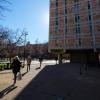 For nearly two decades, physicists at JILA have pioneered record-fast lasers that can fit on a table and have chilled clouds of atoms to just a fraction of a degree above absolute zero. With a new award, their work is just getting started.
For nearly two decades, physicists at JILA have pioneered record-fast lasers that can fit on a table and have chilled clouds of atoms to just a fraction of a degree above absolute zero. With a new award, their work is just getting started.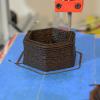 Coffee could be the key to reducing 3D printing waste, according to a new study. Researchers with the ATLAS Institute and Department of Computer Science developed a method for 3D printing using a paste made out of old coffee grounds.
Coffee could be the key to reducing 3D printing waste, according to a new study. Researchers with the ATLAS Institute and Department of Computer Science developed a method for 3D printing using a paste made out of old coffee grounds.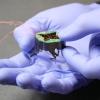 Imagine a robot that can wedge itself through the cracks in rubble to search for survivors trapped in the wreckage of a collapsed building. Engineers at CU Boulder are moving one step closer to that goal with CLARI, short for Compliant Legged Articulated Robotic Insect.
Imagine a robot that can wedge itself through the cracks in rubble to search for survivors trapped in the wreckage of a collapsed building. Engineers at CU Boulder are moving one step closer to that goal with CLARI, short for Compliant Legged Articulated Robotic Insect.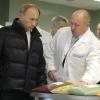 Russian officials have confirmed the Aug. 23 plane crash in the outskirts of Moscow killed Yevgeny Priogozhin, friend-turned-foe of Russian President Vladimir Putin. CU expert Sarah Wilson Sokhey offers her take on what Prigozhin’s death means for the war in Ukraine and how a coup attempt against Czar Nicholas II in 1907 could provide clues about what will happen next.
Russian officials have confirmed the Aug. 23 plane crash in the outskirts of Moscow killed Yevgeny Priogozhin, friend-turned-foe of Russian President Vladimir Putin. CU expert Sarah Wilson Sokhey offers her take on what Prigozhin’s death means for the war in Ukraine and how a coup attempt against Czar Nicholas II in 1907 could provide clues about what will happen next.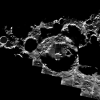 Marking the latest milestone in a new kind of space race, India's Chandrayaan-3 mission touched down safely on the moon. CU Boulder astrophysicist Jack Burns gives his take on why nations and companies are hurrying to parts of the moon that no Apollo craft ever visited.
Marking the latest milestone in a new kind of space race, India's Chandrayaan-3 mission touched down safely on the moon. CU Boulder astrophysicist Jack Burns gives his take on why nations and companies are hurrying to parts of the moon that no Apollo craft ever visited. Roughly 73 million years ago, dinosaurs like tyrannosaurs and hadrosaurs lived among conifer trees in northern Alaska. The region was also home to a much smaller creature—a tiny mammal that weathered months of darkness and freezing temperatures in the winter.
Roughly 73 million years ago, dinosaurs like tyrannosaurs and hadrosaurs lived among conifer trees in northern Alaska. The region was also home to a much smaller creature—a tiny mammal that weathered months of darkness and freezing temperatures in the winter.


